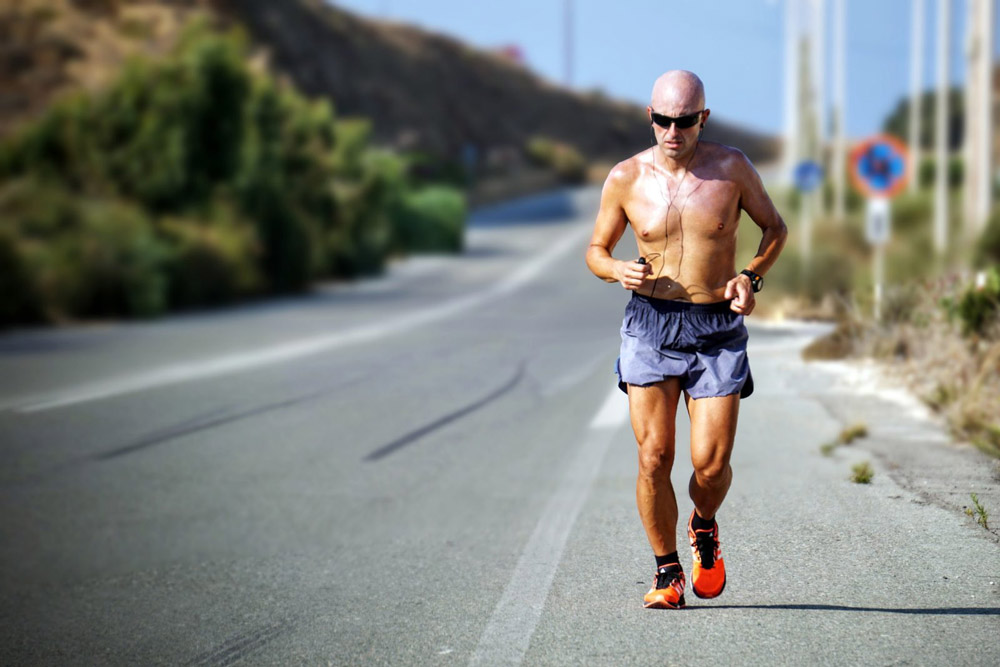PATELLOFEMORAL PAIN SYNDROME
Do you feel like your knee pain is “runners knee”?
Do you suffer from knee pain during running, stairs, or even “movie goer’s knee”?
It is estimated that one in four runners may experience knee pain throughout their running career. One of the most common causes of that pain is due to patellofemoral pain.
This comes about when there is a misalignment between the tracking between the femur and the patella.
As running can place up to five times the force of the body on the knee, the potential for injury is dramatically increased.
As a result the knee pain that results can inhibit muscle activation or swifting on quickly enough to stabilise the knee.

The patella is a very important bone. It is classified as a “sesamoid” bone, which is a bone that is located inside a tendon. In the case of the patella, it is found embedded within the tendon of the quadriceps muscle. A contraction of the quadriceps will cause the patella to pull up as the knee extends.

HOW DOES PATELLOFEMORAL PAIN SYNDROME OCCUR?
Patellofemoral pain syndrome (PFS) comes about usually with running, or with activities that involve a significant amount of bending at the knee joint – jumping, walking up stairs, and squatting.
Even going to the movies and crossing legs can be a sustained load on the patella which the muscles attaching onto the knee capsule can create an imbalance of forces around the patella alignment.
The patella normally tracks through a cartilage-lined section of the femur bone known as the patella surface. The pull of the patella should be reasonably straight.
There are a number of conditions, however, that may cause the tracking of the patella to take off to the side, which can cause compressive force and pain.
- There has been some question as to whether it is incorrect movement of the patella, or incorrect movement of the femur which causes the misalignment. Weakness in the hip muscles, or weakness in the quadriceps muscle particularly the vastus medialis oblique (VMO) can cause either an abnormal rotation of the femur, or an abnormal pull to one side of the patella, respectively.
- It is also believed that females are more predisposed to patellofemoral pain as their hips are generally anatomically wider. This may place the femur at a greater angle at the knee when compared to a male’s femur angle.
- Excessive rolling in movement (pronation) of the foot may cause patellofemoral pain, as the alignment and movement of the foot can cause the knee to turn inward. As a result, the patella is at an increased risk of tracking through the femur incorrectly and will increase the force load on the patella as it guides during movement.
HOW DO YOU TREAT PFS?
Treatment for patellofemoral pain usually requires a few strategies. Ensuring even muscle strength at the hip and knee are imperative, and strengthening and stretching programs are typically required.
In addition, footwear and the mechanics of the feet need to be considered. Orthotics are often used to prevent excessive pronation, and may be beneficial in reducing the painful symptoms.
PHYSIOTHERAPY CAN HELP WITH KNEE PAIN OR PFS
- Biomechanical assessment – where is the issue steam from? Foot, knee itself, hip, or lumber spine?
- Exercise prescription and load management – VMO exercise video; Clam exercise; for example.
- Shoe or runner’s footwear advice.
- Manual therapy or “hands on work” to work on muscle imbalances.
If you are experiencing knee pain while running or walking, come see our experienced Physiotherapists at Pivotal Motion. Book an appointment online or call us today on 07 3352 5116.

